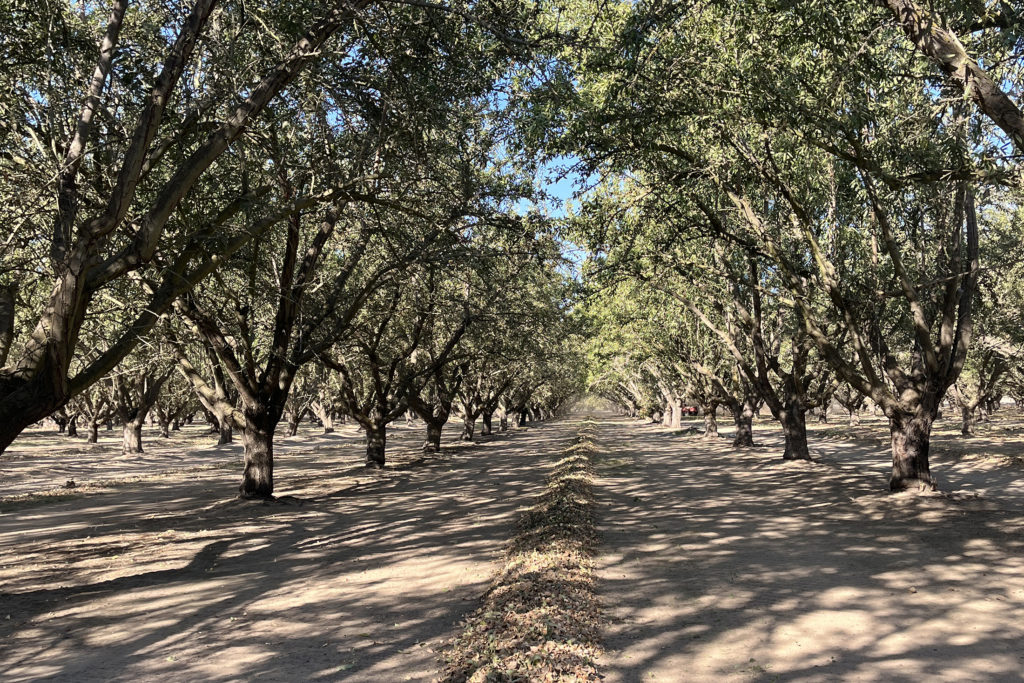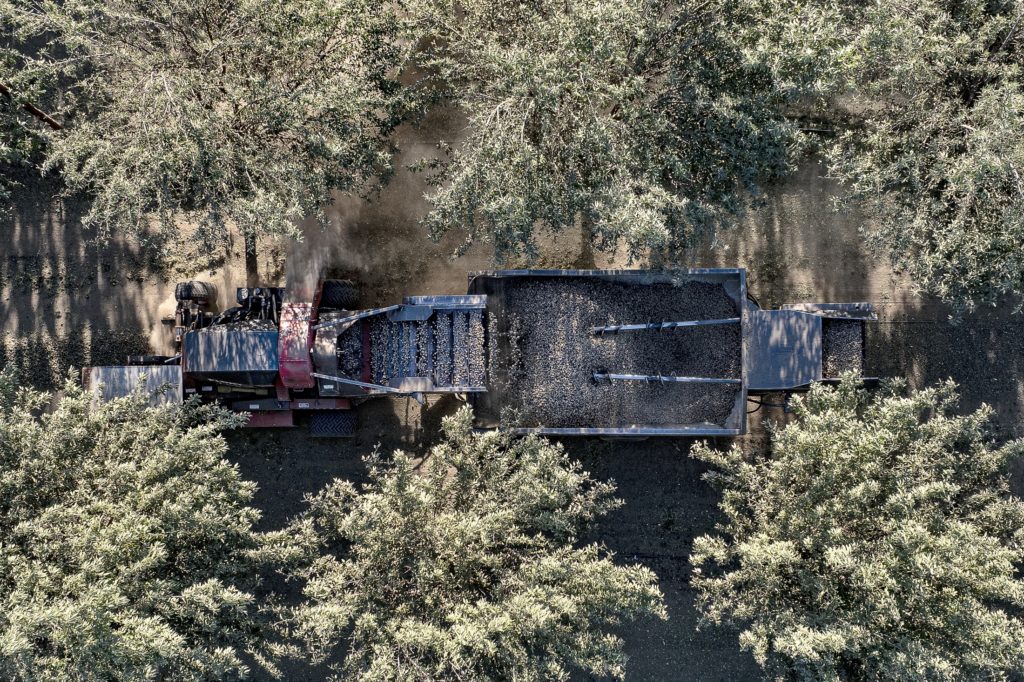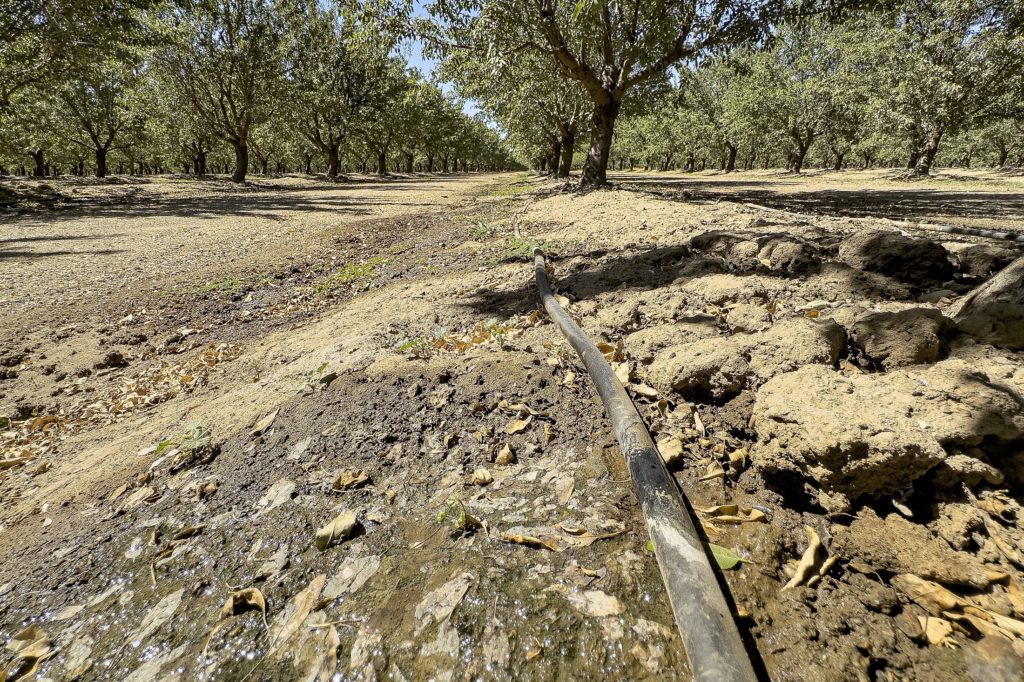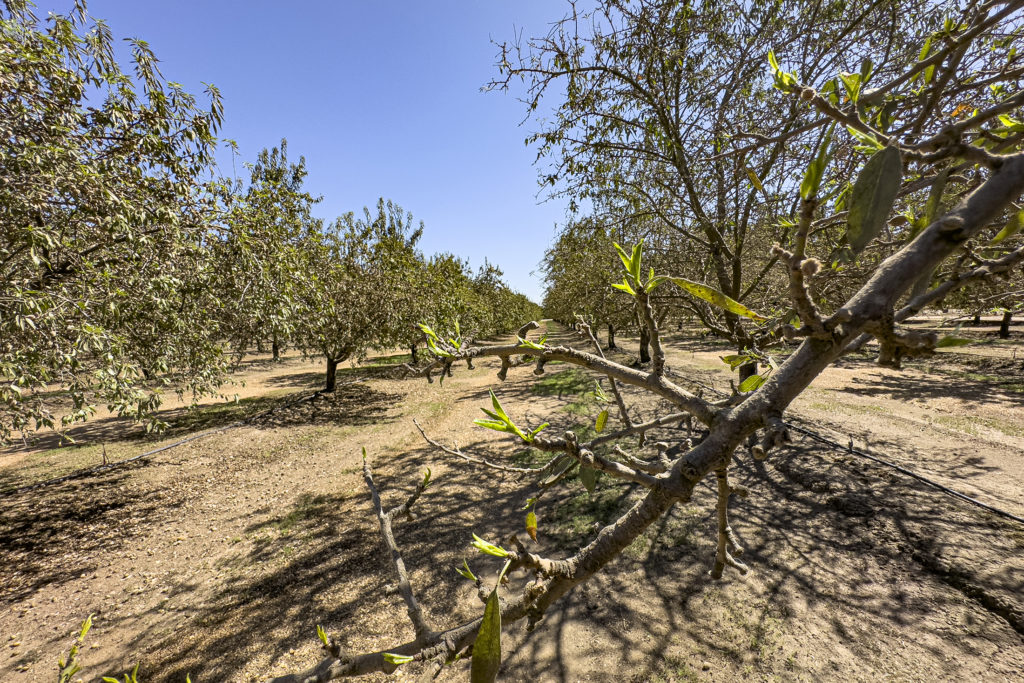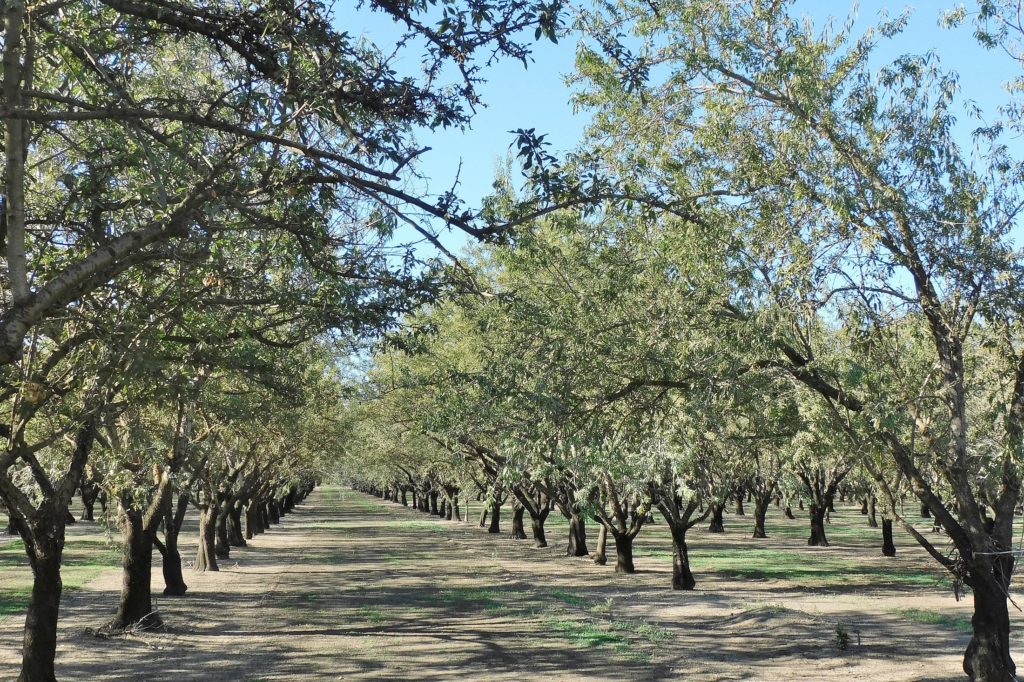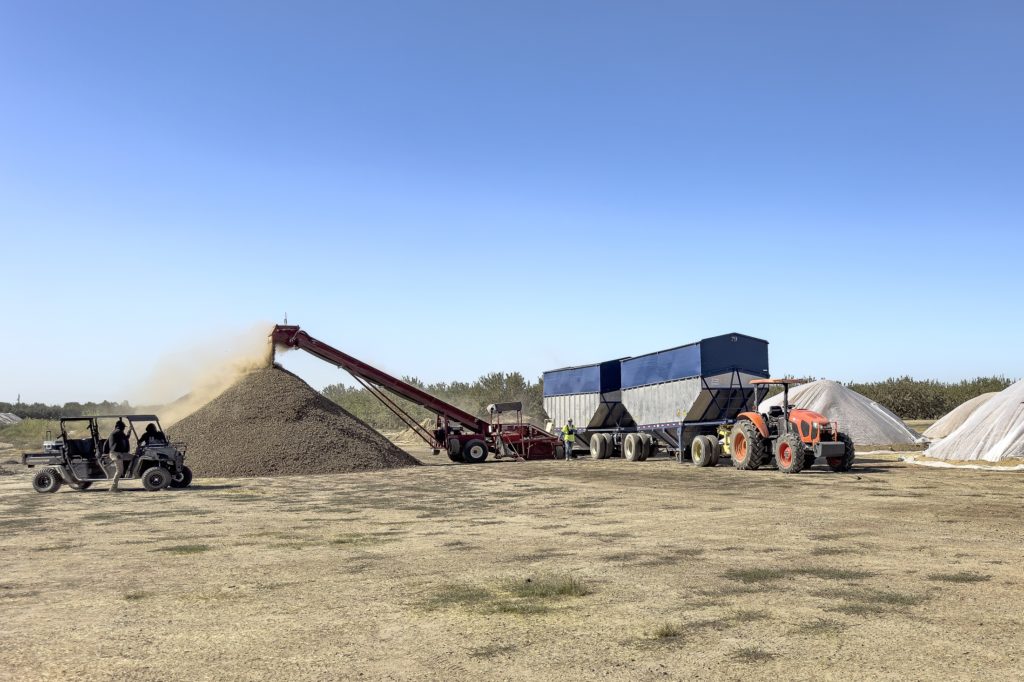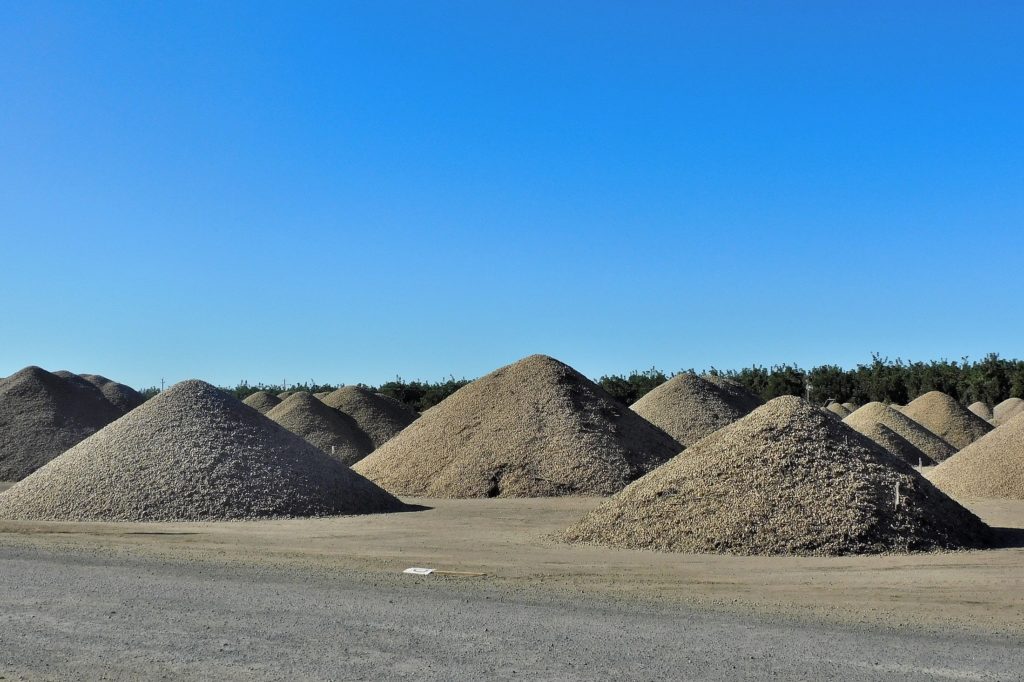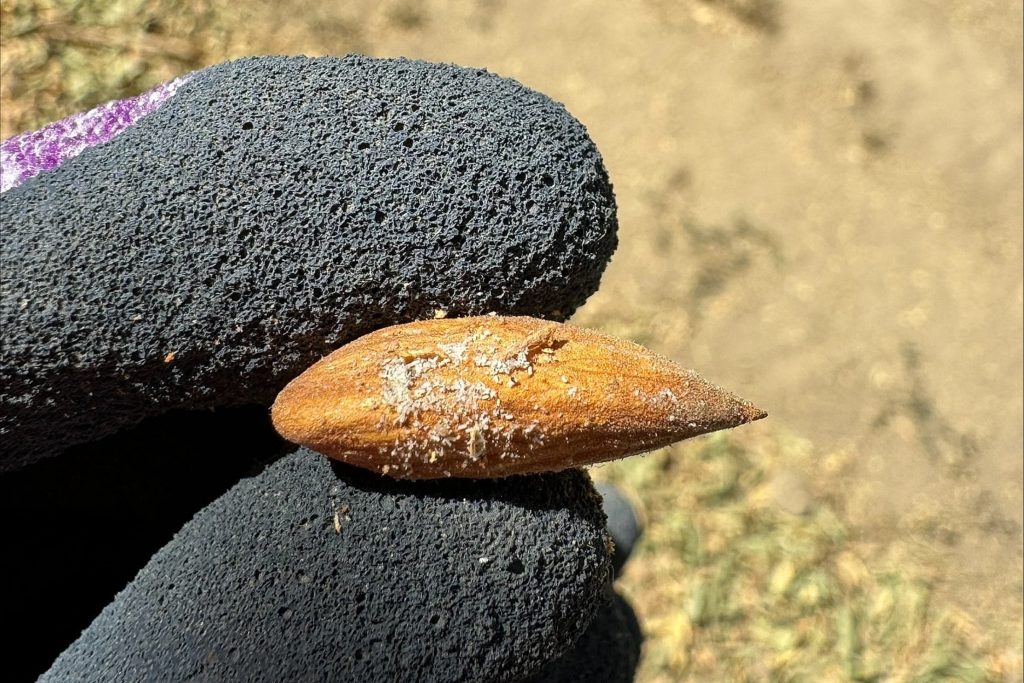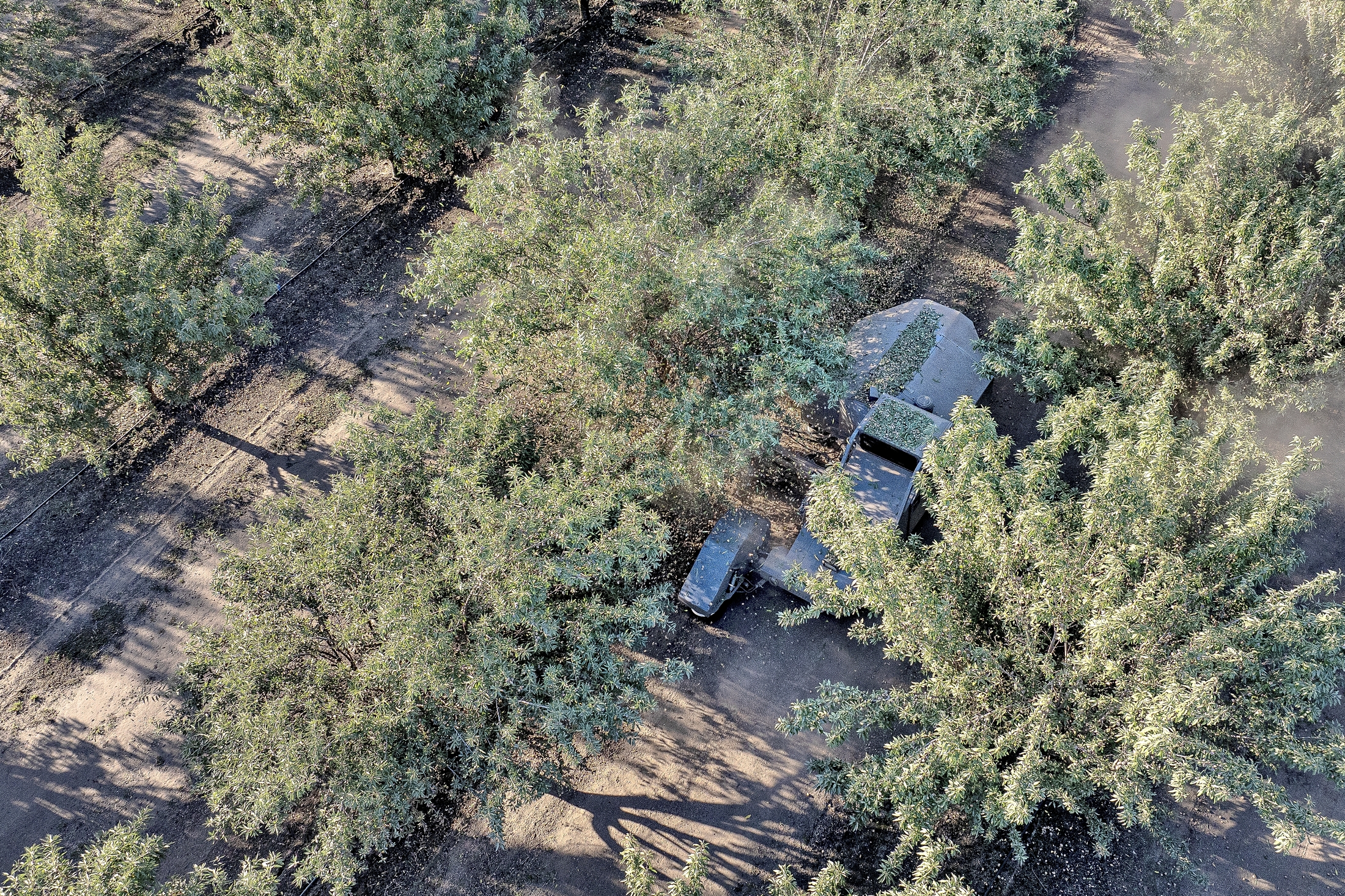
This report covers the conditions and activities observed from Monday, August 26, 2024, through Sunday, September 29, 2024. The next scheduled report will be posted on Monday, November 4, 2024. In the event of any significant occurrences prior to that date, this site will be updated as soon as possible.
The summer to fall seasonal transition brought a continuation of summer-like temperatures throughout California’s Central Valley. With the exception of several days at mid-month when readings dipped into the mid-70’s to lower 80’s as a weakening low-pressure system passed over the state, daily maximum temperatures were reported predominately in the low to mid-90’s to just over 100 degrees in all areas. Growers in areas of Tehama, Glenn and Butte counties in the northern Sacramento Valley received from trace amounts to approximately 0.5 inch of rainfall from the passing system, enough to halt harvest operations for a few days to allow the crop to dry. Isolated showers were also reported in areas of Kern County in the southern San Joaquin Valley. Daily morning lows followed the pattern established by the daily maximum readings, with temperatures reported between the mid-50’s and mid-60’s throughout the month.
Harvest operations continued in the Central Valley during September, with equipment moving rapidly through the orchards. Field operations on the early harvesting Nonpareil and Independence varieties have been completed and growers have moved on to the balance of their varieties. Observers have noted that the flow of in-hull product has moved from the orchards to the huller/shellers or stockpiles at record pace, owing to the warm temperatures and low moisture levels within the crop. Kernel moistures have been reported as low as 2%, with much of the crop coming in at 3% to 4% moisture, instead of the normal 4.5% to 6.5%. The low moisture levels have allowed the crop to flow very rapidly through huller/sheller machinery, setting daily production records at many facilities.
Observers are reporting that in many cases, growers are sending harvest equipment immediately back into the orchards to shake pollinator varieties without pausing to irrigate. Those with drip irrigation systems are able to provide water to the trees even as windrows of previously shaken and windrowed product lay on the orchard floor. Orchards with other irrigation systems covering a greater area of the orchard floor must have the crop removed prior to irrigation. In any event, growers are rushing to provide water to their trees after harvest in order to avoid undue stress.
In addition to revealing the year’s production, the harvest also exposes the results of grower’s pest management efforts.
- Following the extremely high levels of navel orangeworm (NOW) damage sustained in the 2023 crop, many growers refocused their efforts over the year on managing this challenging insect pest. As reported in our August 29th report, reject levels in the early weeks of the harvest were noted at tolerable levels. However, the third NOW flight that occurred in the closing days of August has created significant issues, resulting in unacceptably high reject levels again this year. Observers and growers have noted that economics has played as role this year as growers worked to minimize costs. Unfortunately, orchards receiving minimal care have served as a source of inoculum for neighboring orchards. Growers who have made diligent efforts to control NOW, using sanitation, mating disruption and hull split treatments are reporting significant damage as adult NOW moths emerge from neighboring orchards to mate and lay eggs across the landscape. Many have suffered damage from the “third flight” or generation as the newly emerged larvae burrow into the kernels producing high levels of “pinhole.”
- Brown spot, the result of feeding by stink bugs or leaf-footed plant bugs, has also been reported at abnormally high levels this year and has caused significant losses for many growers.
- Carpophilus beetles have been observed in all growing regions. But with a few notable exceptions, damage from this new, the invasive beetle has failed to reach significant levels. Observers have reported that identifying Carpophilus damage on nuts in the orchard or on harvested in-hull almonds is relatively easy. The meal or flour-like residue produced by their feeding is normally easily seen within the shell, while kernels that have incurred significant damage are easily distinguished from those attacked by NOW. However, without the flour-like residue, identifying the earliest damage caused by Carpophilus in shelled almonds can be challenging as both NOW and Carpophilus enter the kernel by creating a “pinhole.” Positive identification of pinhole damage is best made by splitting the kernel to provide closer examination.
- As noted in our previous report, web-spinning spider mites have made a strong appearance this year, defoliating orchards in the most severe infestations. Fortunately for many growers, effective treatments and a resurgence of beneficial predatory insects have mitigated the worst instances, and widespread defoliation has been avoided.
For those who have completed their harvest, post-harvest tasks now move to the front of mind. Irrigation becomes the most immediate need, followed by smoothing of the orchard floor, eliminating any unevenness produced by the harvest. Application of soil amendments and fertilizers are also being completed, along with preparations for planting of cover crops to support the honeybees prior to the 2025 bloom.
By Mel Machado, Vice President of Member Relations
Photos By: Christine Ivory, Austin Jackson, Ashley Correia, and Mel Machado


